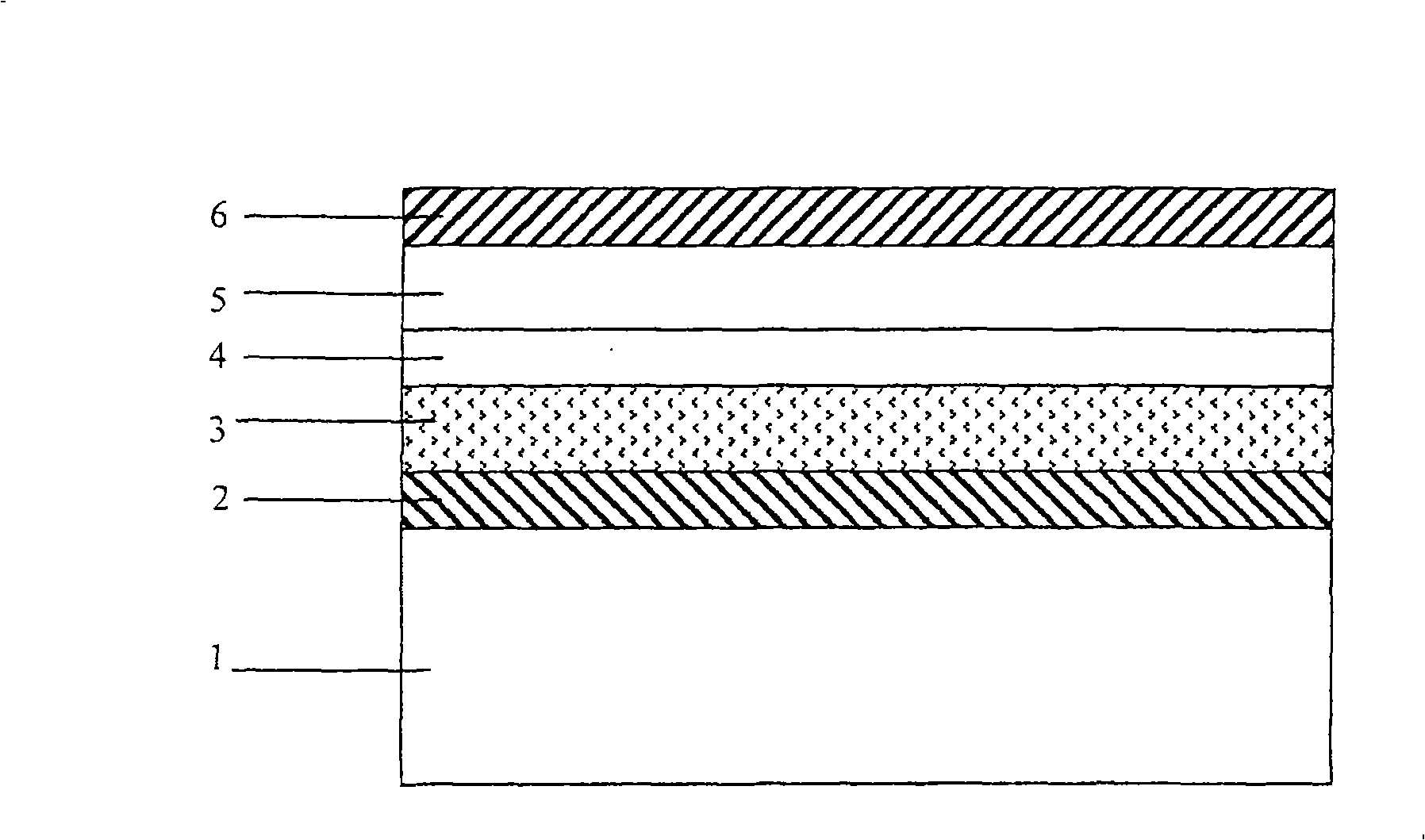Electronic component comprising a p-doped organic semiconductor
A technology of organic semiconductors and electronic components, applied in the field of p-doped organic semiconductor materials, can solve problems such as toxicity
- Summary
- Abstract
- Description
- Claims
- Application Information
AI Technical Summary
Problems solved by technology
Method used
Image
Examples
Embodiment Construction
[0021] refer to figure 1 , the anode 2 is deposited on the insulating substrate 1 . The anode is made, for example, of ITO with a work function equal to 4.7 eV; the deposition is carried out in a conventional manner, eg cathode sputtering in vacuum.
[0022] A layer 3 of p-doped organic semiconductor material designed for hole transport purposes is subsequently deposited. The deposition is carried out by co-evaporation of the organic semiconducting material and a p-dopant in vacuum, where the p-dopant is an inorganic chemical element having an ionization potential higher than or equal to 4.7 eV; for example using cobalt or nickel; thus, with Unlike the p-doping described in documents EP0948063 and US4481132, the product co-deposited with the semiconductor is not an inorganic chemical salt element or a Lewis acid (Lewis acid); therefore, the degree of oxidation of the co-deposited element here is equal to zero, however when using a salt or a Lewis acid It is usually higher th...
PUM
 Login to View More
Login to View More Abstract
Description
Claims
Application Information
 Login to View More
Login to View More - R&D
- Intellectual Property
- Life Sciences
- Materials
- Tech Scout
- Unparalleled Data Quality
- Higher Quality Content
- 60% Fewer Hallucinations
Browse by: Latest US Patents, China's latest patents, Technical Efficacy Thesaurus, Application Domain, Technology Topic, Popular Technical Reports.
© 2025 PatSnap. All rights reserved.Legal|Privacy policy|Modern Slavery Act Transparency Statement|Sitemap|About US| Contact US: help@patsnap.com

